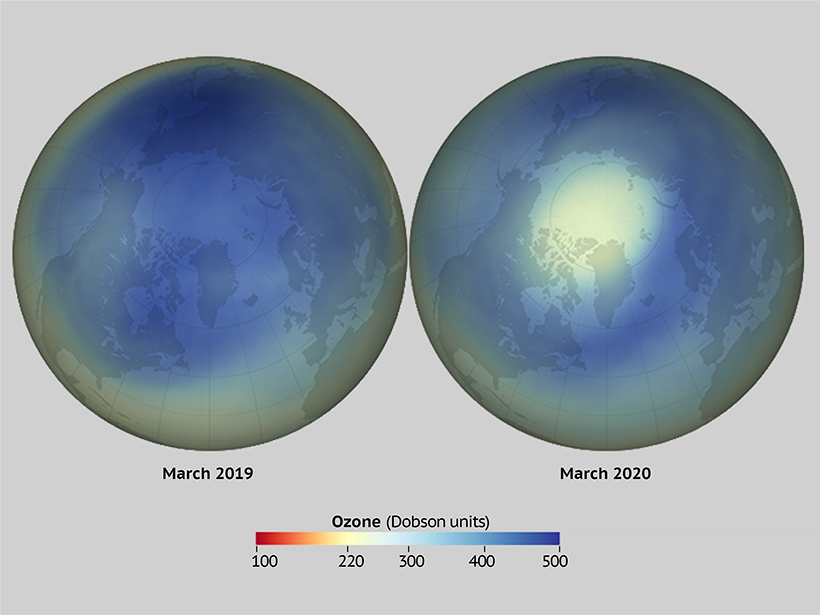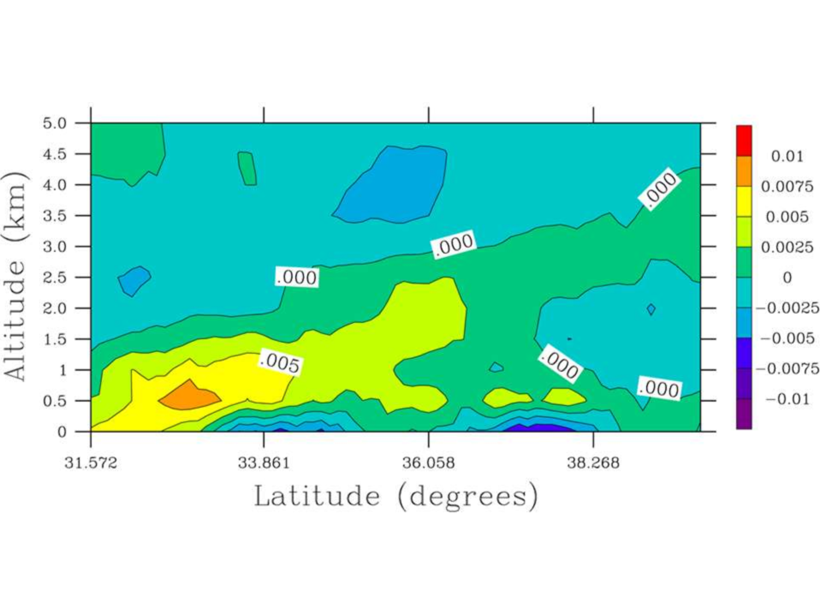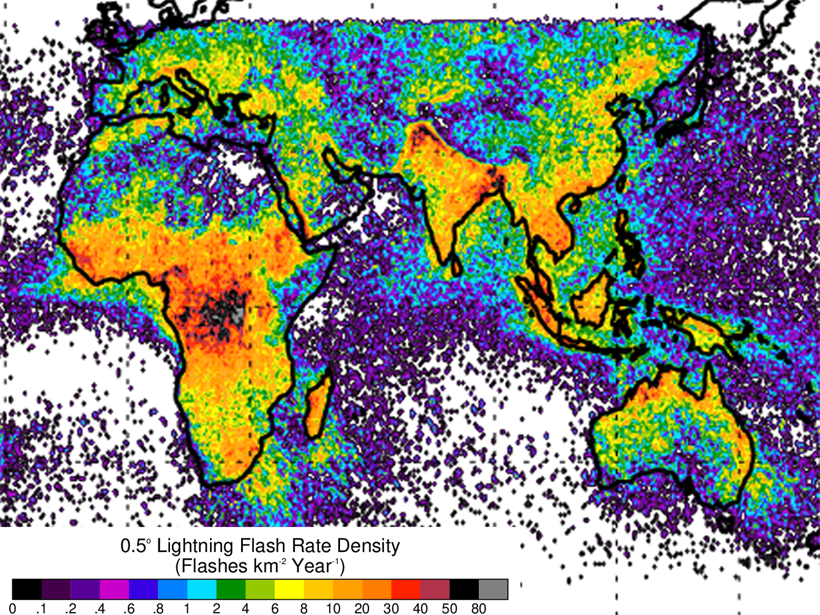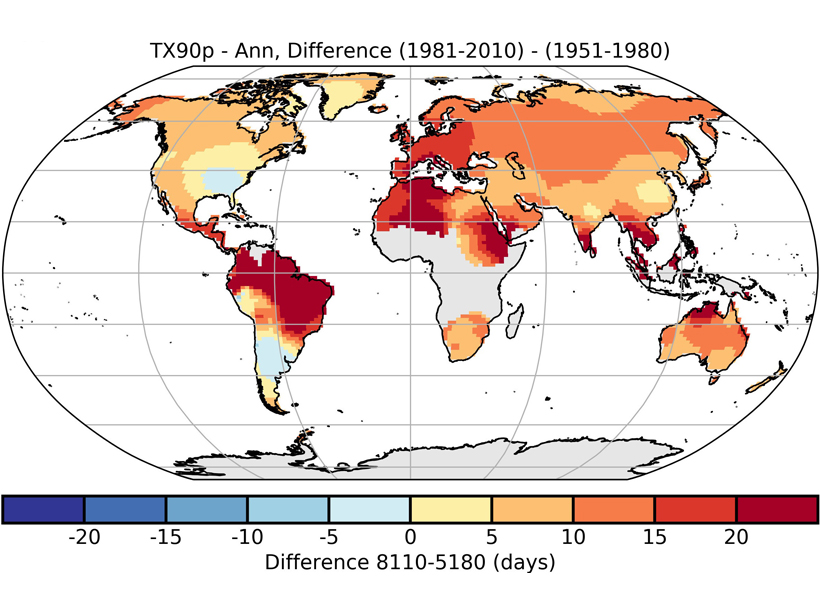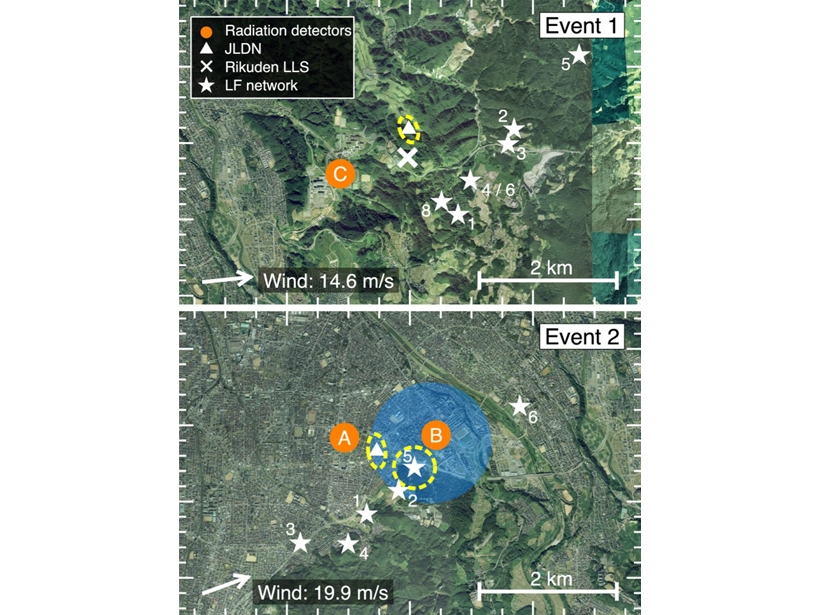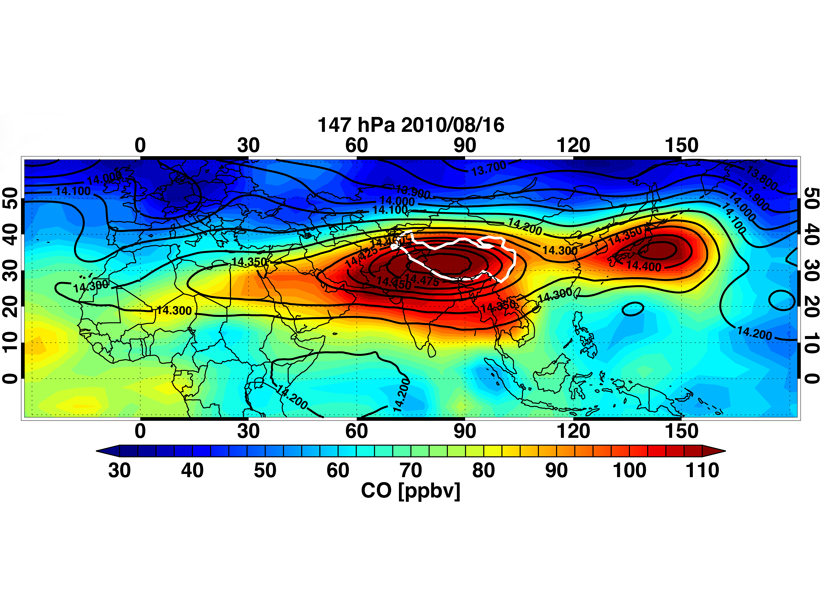An exceptionally strong stratospheric polar vortex coincided with a record-breaking Arctic Oscillation pattern and ozone destruction during the 2019–2020 winter season.
Journal of Geophysical Research: Atmospheres
Gravity Waves Leave Ripples Across a Glowing Night Sky
A thunderstorm made waves on a rare “bright night.”
Comparing Impacts of CO2 and Particle Emission Reductions
Black carbon contained in airborne particles is often cited as a major factor warming the climate, but how much can California reduce climate change through reducing airborne particle concentrations?
A New Look at Global Lightning from the Space Station
The Lightning Imaging Sensor on the International Space Station provides an expanded view of global lightning that improves scientific understanding of the Earth as well as public safety.
A New Dataset of Temperature and Precipitation Extremes
HadEX3 is an updated dataset of gridded temperature and precipitation extremes, that covers the period of 1901 to 2018 and has improved spatio-temporal coverage.
Streamer Corona Discharges in Thunderstorms Detected from Space
Concurrent detection from space and the ground of blue optical flashes from streamer corona discharges at altitudes between 8.5 and 14 kilometers and radio waves.
Lightning Discharge Type Linked to Terrestrial Gamma‐Ray Flashes
For the first time, the connection between energetic in cloud pulse and terrestrial gamma‐ray flashes is confirmed in the Gamma-Ray Observation of Winter Thunderclouds experiment in Japan.
When Chemistry Lends a Hand to Dynamics
Chemical signature and chemical transport analyses help understand the dynamics of the Asian Summer Monsoon.
Meiyu: The Dragon Dictating Rainfall Variability in East Asia
According to Chinese myth, rain is water poured out of a dragon; in reality is the Meiyu that dictates rainfall in eastern Asia, producing rain belts jumping from south in spring to north in summer.
A Global View of Shapes and Sizes of Ice Crystals in Cloud Tops
Ice particles have systematic covariations and temperature dependences that are surprisingly consistent with a simple ice growth theory as revealed by satellites.

